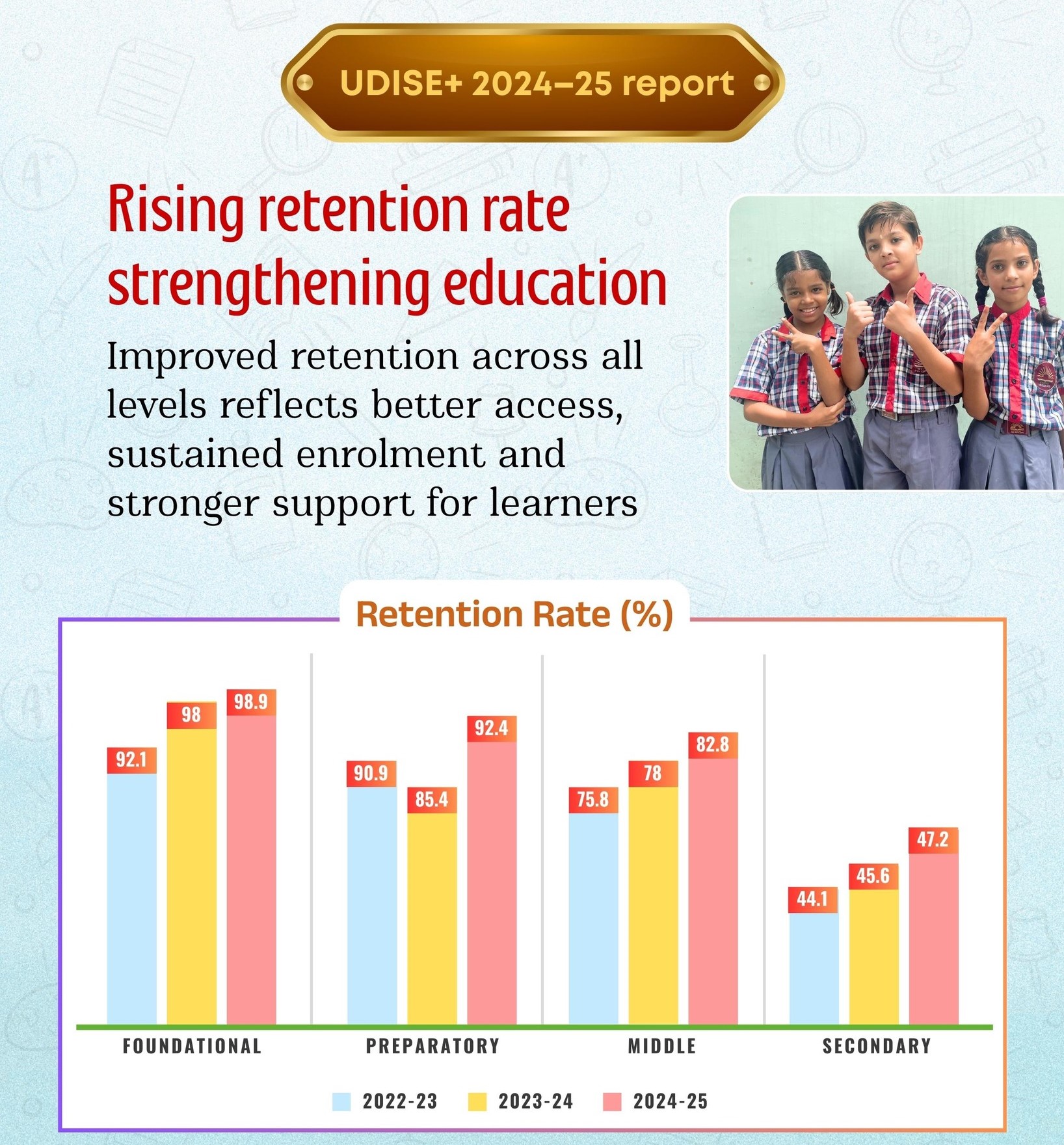Context:
The Ministry of Education (MoE) released its Unified District Information System for Education Plus (UDISE+) 2024-25 report on August 28, 2025. A sharp decline of 25 lakh students aged 3–11 years in early education enrolment has raised serious concerns about India’s foundational learning landscape.
Key Findings:
- Foundational drop: Enrolment in anganwadis, pre-schools, and Classes 1–5 fell from 12.09 crore in 2023–24 to 11.84 crore in 2024–25, a dip of nearly 25 lakh.
- Overall enrolment (Classes 1–12) dropped by 11 lakh, now at 24.69 crore — the lowest since 2018–19.
- Demographic shifts, such as declining fertility rates (TFR at 1.91), are cited as major reasons.
- Contrasting trend: Enrolment increased in middle (6–8) and secondary (9–12) levels by 6 lakh and 8 lakh respectively.
- Gross Enrolment Ratio (GER) improved across all levels, and dropout rates decreased.
- Teacher–student ratio improved significantly since 2014–15 across all school stages.
Reasons for Decline enrolment:
Officials attribute the decline in enrolment numbers to falling birth rates, with India's total fertility rate (TFR) dropping to 1.91 per woman by 2021, below the replacement level of 2.1.
The decline could also be explained by the presence of children in pre-primary standalone private institutions
Positive Trends:
· The teacher-student ratio has improved across all levels, with one teacher for every 10 students at the foundational stage and one teacher for every 17 students at the middle level.
· Dropout rates have reduced across all levels, with a significant decline in secondary school dropout rates from 10.9% to 8.2%
About UDISE+ Report:
The Unified District Information System for Education Plus (UDISE+) is the Ministry of Education’s annual report providing detailed, school-level data on India's education system.
· It includes statistics on enrolment, school infrastructure, teacher-student ratios, and student demographics, including gender and social categories such as SC, ST, OBC, and minorities.
· Introduced to support the National Education Policy (NEP) 2020, the report now includes metrics on digital learning, peer interaction, and internet access in schools.
· Schools across India voluntarily upload data through an online portal.
Conclusion:
The UDISE+ 2024–25 report presents a mixed picture: while India’s education system is witnessing stronger retention and improved teacher–student ratios, the decline in early-grade enrolment demands urgent attention. Policymakers must assess the long-term demographic trends, ensure inclusivity in pre-primary education, and adapt strategies to support foundational learning for all children—especially as India approaches a new census cycle in 2026.







